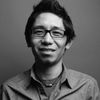Click here to watch the TEDTalk that inspired this post.
Mao Zedong once remarked, in a moment of poetic epiphany, that a dance troupe of a dozen artists is more powerful than a battalion of a thousand troops. The latter can only change people's behavior; the former can change people's minds.
Liu Bolin's art seeks to do what a battalion of soldiers cannot. He makes people think - a dangerous thing to do in any totalitarian society, for thinking might lead you to the truth. Authoritarian regimes don't want their citizens to think; it is easier to rule an unthinking mass of millions than a few dozen thinking citizens.
Liu's photographs, which show him fading into various backgrounds, speak to the contemporary sociopolitical issues that plague his nation. I thought to myself: Do these photographs represent China's faceless, voiceless masses crushed by the deadly combination of authoritarianism and consumerism? Or are they a critique against China's culture of conformity that strangles individuality and originality?
Maybe Liu's art is a satirical manual for survival under tyranny. How do you survive in a society built by lies? Well, one way to do so is through camouflage - become invisible, remain silent. If you speak the truth, you will stand out and be seen. The minute you are seen, you become a target. Visibility brings vulnerability; invisibility, on the other hand, gives you a layer - or at least the perception - of protection.
If invisibility were the price one pays for survival, would you want it? That may not be Liu's question, but it's a question I want to ask. If someone were to spend his entire life being invisible and silent, walking with his head down through the lies and injustices thrown at him, would he be any different from a ghost? What proof will the world have of his existence even if he lived for a hundred years?
One of the inexplicable realities about the human spirit is that it wants to live in daylight instead of darkness; it wants to survive in dignity instead of obscurity. In China today, notwithstanding the risks, people are choosing to break their silence. Some do it through protest and petition; some do it online; yet others do it through art and performance. Whatever method they choose, to borrow Vaclav Havel's phrase, they are starting to "live in truth." Whether this truth is in the physical realm or cyber space, these people are powerless no more.
Twenty-five years since the tragic night when tanks in Beijing crushed the democratic dreams of millions of Chinese, the country has become visually unrecognizable. From the glitzy towers of Shanghai to the financial districts of Shenzhen, China has undergone staggering changes - but these changes are cosmetic in nature. At its heart, China remains the same authoritarian country, under the dictatorship of a tyrannical party, where ordinary citizens live without the most basic freedoms that we in the free world take for granted.
In China's occupied territories, Tibet and East Turkestan, the situation is far worse. Just yesterday CNN published a chilling report that the Chinese government sentenced 55 Uyghurs before 7,000 spectators in a stadium, holding a show trial reminiscent of the Cultural Revolution. In Tibet, Beijing's ethnocidal policies - displacing more than a million nomads from their ancestral grasslands, installing surveillance cameras in monasteries and street corners, arresting people for owning a picture of the Dalai Lama - are driving Tibetans to the edge of despair. Since 2011, more than 130 Tibetans have set themselves on fire to protest the unbearable repression.
However, in spite - or perhaps because - of the harsh political environment, Tibetans have started wielding art as a weapon of protest. Through art, those fighting oppression are able to occupy a gray area that is often nonexistent in the black-and-white canvas of politics. Art provides an elasticity, unpredictability and malleability that elevates, and eventually transcends, political resistance.
In recent years, many Tibetans have embraced art, poetry, music, and film as vehicles for expressing their faith in the Dalai Lama, love of their homeland, and desire for freedom. This embrace of art as an instrument of freedom has led to an unprecedented revival in Tibetan culture.
Mao the poet was right: artists are mightier than soldiers. Wielding nothing but their brush or camera, artists like Ai Weiwei and Liu Bolin are awakening the Chinese conscience from the slumber that Mao the dictator had induced half a century ago.
Today, a growing number of Chinese artists are sharing their vision of a free China with the public, and there is little that the government can do to stop them. Every now and then, the authorities will put someone in jail - in 2011, they detained Ai Weiwei for 81 days - but they cannot imprison his art, which lives in a realm beyond the reach of violence. They may turn off the lights, but they cannot force the prisoner to sleep.
Change is coming to China, whether from the center or from the periphery. As more people in China, Tibet and East Turkestan leave their fear behind and start "living in truth," the world must stand behind them.
We want to know what you think. Join the discussion by posting a comment below or tweeting #TEDWeekends. Interested in blogging for a future edition of TED Weekends? Email us at tedweekends@huffingtonpost.com.
